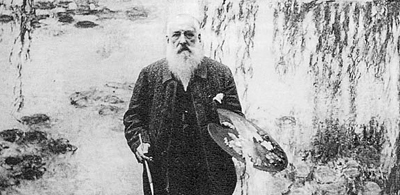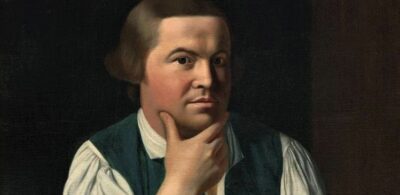Thomas Jefferson and the Michelangelo of Paris
New York’s Democrat Mayor de Blasio and his allies finally succeeded in removing the bronze statue of Thomas Jefferson that stood in the legislative chamber of the New York City Council for more than 100 years. On October 18, 2021, the mayor’s Public Design Commission voted unanimously to take down the statue. I view the censorious act as an open attack on art and history, and here I will attempt to explain my discomfort over the purge.
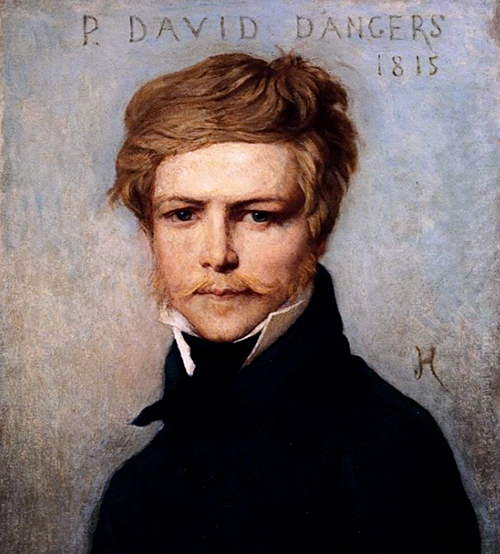
Regardless of coming from the left or right, the overwhelming number of reports on the statue’s ban fail to mention the artist who created it. That would be Pierre-Jean David d’Angers, also known simply as David d’Angers, one of the most renowned French sculptors of the early nineteenth century. As a young man in 1808 he studied sculpture at the famous École des Beaux-Arts in Paris, and was mentored by famed artist Jacques-Louis David, the preeminent painter of the day and First Painter to Napoleon Bonaparte.
David d’Angers created portrait busts and medallions of historic figures like Goethe, Caspar David Friedrich, Géricault, Harriet Beecher Stowe, and Victor Hugo—author of the 1862 novel Les Misérables. Hugo called him “the Michelangelo of Paris.” By the end of his life David had created nearly five-hundred portrait medallions in bronze; he once said, “I have always been moved by the sight of a profile.” Perhaps his most famous work was the 1830 commission to create granite statues for the entrance to the Pantheon, the building in Paris dedicated to heroes of the French Revolution: each granite figure is a masterwork. At center is featured Patria, Liberté, and Histoire as they prepare to bestow glory upon the nation’s paragons.
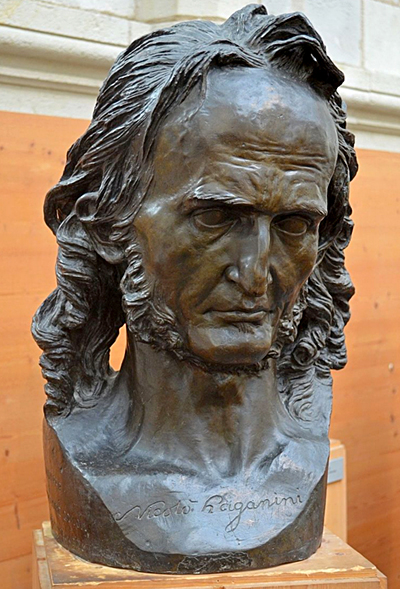
But this essay is about the bronze statue David d’Angers created of Thomas Jefferson, founding father, author of the Declaration of Independence, and the third President of the United States. Around 1833 United States Navy Officer Uriah Levy, who was Jewish, privately commissioned David to create a statue memorializing Jefferson for his having drafted the 1776 Virginia Statute for Religious Freedom, the document that helped to establish religious freedom in America.
By 1834 David had created a beautiful seven-foot-tall plaster portrait of Jefferson; the artist was a master at fashioning portrait busts and statues from plaster, an art form that can be traced back to ancient Greece. David’s plaster statues and portrait busts were considered finished works of art, and were often sold or gifted as such. As in ancient Greece, his plaster works were sometimes painted, not garishly in the style of the Greeks, but instead painted to appear as bronze castings. That was the case with David’s plaster of Jefferson.
However, a good plaster statue could also be the first step in making a mold for the “lost wax process” of bronze statue creation, and David did create a bronze statue from his plaster of Jefferson. The lost wax method of sculpture dates back to the ancient Mesopotamian civilization of some 2,000 years ago, and despite today’s technological updates, the technique remains essentially the same. Watch this brief video to understand how a “lost wax” bronze statue is created.

David d’Angers portrayed Thomas Jefferson standing with his right hand grasping a quill pen, and his left hand bearing the Declaration of Independence. Remarkably, Jefferson’s words on the document are readable. David, or likely one of his skilled assistants, pressed metal type fonts from a printing press—one at a time, into the clay of their “lost wax” model.
Uriah Levy presented the bronze statue to the US Congress, and it sits today in the US Capital Rotunda; Levy donated the plaster original to the people of New York. It was first installed in the Governor’s Room of City Hall in 1834, but finally moved to the City Council Chamber of NY City Hall where it has sat since 1915.
New York’s liberal Mayor de Blasio appointed the eleven-member “Public Design Commission” (PDC), also known as the “Art Commission.” The agency is responsible for the city’s public art. On October 18, 2021 the PDC voted unanimously to remove David d’Angers’ statue of Thomas Jefferson from the legislative chamber of the New York City Council. The Black, Latino and Asian Caucus of the New York City Council pushed hard for the removal, saying the Jefferson statue in the chamber was “a constant reminder of the injustices that have plagued communities of color since the inception of our country.”
Democrat Adrienne Adams, co-chair of the Black, Latino and Asian Caucus, condemned the Founding Father, saying: “As it stands, we’ve been under the watchful eye of a slaveholder.” Adams went on to say “Jefferson embodied some of the most shameful parts of our country’s long and nuanced history. It is time for the city to turn the page and move forward.” She continued: “It makes me deeply uncomfortable knowing that we sit in the presence of a statue that pays homage to a slaveholder who fundamentally believed that people who look like me were inherently inferior, lacked intelligence, and were not worthy of freedom or rights.”
Democrat Inez Barron, also a partisan of the Black, Latino and Asian Caucus, damned Jefferson for “ethnic cleansing and genocidal replacement” of Native Americans, while adding men like him acted as a sort of “pimp” in expanding plantations so profits could “be increased.” She went on to say: “We are not waging a war on history. We are saying that we want to make sure that the total story is told, that there are no half-truths and that we are not perpetuating lies.”
There is no doubt that those who want to bury Thomas Jefferson are waging a war on history. They have normalized the banishment of Jefferson’s statue in New York, and will next eliminate his bronze statue in the US Capital Rotunda. Think not? In July 2020 House Speaker Nancy Pelosi (Democrat-California) wrote a letter to Congress urging the removal of Confederate statues; she described the sculptures thusly: “Monuments to men who advocated cruelty and barbarism to achieve such a plainly racist end are a grotesque affront to these ideals. Their statues pay homage to hate, not heritage. They must be removed.”
Pelosi’s verbiage characterizing Confederate statuary is identical to how her fellow democrats in New York described the Thomas Jefferson statue. Now that they have banished Jefferson, why would Pelosi not follow suit?
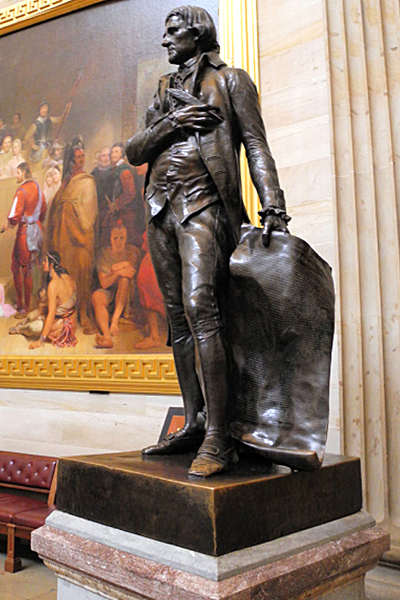
Washington DC’s Democrat Mayor Muriel Bowser is of like mind. She created a group called DCFACES (District of Columbia Facilities and Commemorative Expressions). In Sept. 2020 it recommended the Jefferson Memorial in Washington DC be “removed, relocated, or contextualized” for representing “slavery, systemic racism, mistreatment of, or actions that suppressed equality for, persons of color, women and LGBTQ communities and violation of the DC Human Right Act.”
I think the DCFACES group should be renamed DEFACES, since it believes the same removal treatment should be extended to other federal artworks like the George Washington Monument, the Benjamin Franklin statue, the Andrew Jackson statue, and the Christopher Columbus Fountain.
Once the Jefferson Memorial is “removed, relocated, or contextualized,” the next step will be to demolish Jefferson’s Monticello home in Virginia. Then paintings and statues of Thomas Jefferson found in museums across America will be put in storage; especially the painting of President Jefferson that hangs in the National Portrait Gallery of the Smithsonian dedicated to America’s Presidents. Finally, the National Archives public display of the original Declaration of Independence will be closed and the document locked away in a vault never to be seen again.
And why not? New York’s Mayor, his Public Design Commission, and the New York City Council, have all deemed Jefferson to be little more than a filthy slaveholder who “embodied some of the most shameful parts of our country’s long history.” DC Mayor Bowser promised to “advance” the recommendations of her DEFACES group. Not a single Democrat politician in America has criticized the vote to cancel Jefferson in New York. Even Joe Biden, when asked by CNN “journalist” Anderson Cooper on Oct. 21, 2021 if he agreed with the ban, said: “I think that’s up to the locality to decide what they want to do on that.”
All this eradicating history and erasing past leaders reminds me of George Orwell’s novel 1984; a brief passage from the dystopian tale sums it up nicely: “Every record has been destroyed or falsified, every book rewritten, every picture has been repainted, every statue and street building has been renamed, every date has been altered. And the process is continuing day by day and minute by minute. History has stopped. Nothing exists except an endless present in which the Party is always right.”
David d’Angers’ statue of Thomas Jefferson did not “pay homage to a slaveholder.” It payed homage to the man who wrote the following words in the Preamble to the Declaration of Independence:
“We hold these truths to be self-evident, that all men are created equal, that they are endowed by their Creator with certain inalienable rights, that among these are life, liberty and the pursuit of happiness. That to secure these rights, governments are instituted among men, deriving their just powers from the consent of the governed. That whenever any form of government becomes destructive of these ends, it is the right of the people to alter or abolish it, and to institute new government, laying its foundation on such principles and organizing its powers in such form, as to them shall seem most likely to effect their safety and happiness.”
The Black, Latino and Asian Caucus of the New York City Council says the Jefferson statue “symbolizes the disgusting and racist basis on which America was founded.” But they ignore the fact that Jefferson’s words and actions launched America’s Republic, where democratic governance by the people is still being perfected today. They deny that Jefferson’s words “all men are created equal,” became a clarion call, a rallying cry for people yearning for liberty.
That cry reached the island of Hispaniola in the Caribbean, where Spain and France vied for colonial control; Spain ceded the western third of the island to the French, who called it Saint-Dominque (now Haiti). In 1791 the black general Toussaint Louverture led an army of slaves that overthrew the colonialist imposed slave-based system in Saint-Dominque.
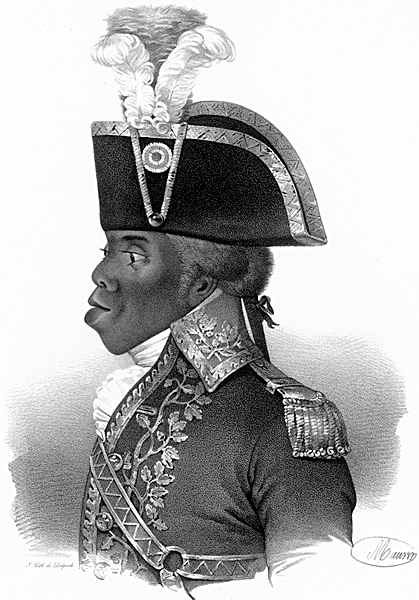
John Adams, who opposed slavery, was America’s second president from 1797 to 1801. He not only supported Louverture by recognizing his revolutionary government, he established diplomatic and trade relations with him and provided Louverture with economic and military aid. When rivals attempted a mutiny against Louverture, Adams sent five heavily armed US Navy ships to aid him. American commanders planned joint operations with their black counterparts and even placed US ships and crews under the command of black Haitian officers—it was the first US Navy intervention carried out on behalf of a foreign ally. How’s that for the “disgusting and racist basis on which America was founded”?
An honest question for those “decolonize” activists who are still reading this screed, did President John Adams buttress “whiteness” and “systemic racism” by backing Toussaint Louverture?
While President Adams supported Louverture’s government, Vice President Thomas Jefferson did not. I always found Jefferson’s lack of regard for the Haitian revolution disappointing, but politics has always been a complicated affair. Louverture fought France and allied himself with Spain, until France outlawed slavery in 1794, then he allied himself with France and fought Spain! Adams lost his reelection to Jefferson, who took office as president in 1801. That same year Louverture declared himself leader of Saint-Dominque, but France betrayed him when Napoleon Bonaparte invaded the island with 20,000 soldiers in 1802, reinstated slavery, arrested Louverture, and sent him to France where he died in prison. Like I said, politics is a complicated matter.
We cannot change, erase, rewrite, or replicate history. But we can learn from it. As for the moral failings of Thomas Jefferson regarding slavery, I have long taken my cue from the noble African-American patriot and fiery abolitionist Frederick Douglass. In 1852 he delivered a public speech, in which he said the following about Jefferson and the founding fathers:
“Fellow Citizens, I am not wanting in respect for the fathers of this republic. The signers of the Declaration of Independence were brave men. They were great men too—great enough to give fame to a great age. It does not often happen to a nation to raise, at one time, such a number of truly great men. The point from which I am compelled to view them is not, certainly, the most favorable; and yet I cannot contemplate their great deeds with less than admiration. They were statesmen, patriots and heroes, and for the good they did, and the principles they contended for, I will unite with you to honor their memory.”
Douglass went on to say: “I have said that the Declaration of Independence is the ring-bolt to the chain of your nation’s destiny; so, indeed, I regard it. The principles contained in that instrument are saving principles. Stand by those principles, be true to them on all occasions, in all places, against all foes, and at whatever cost.”
I think it plain to see, New York’s mayor, his Public Design Commission, the Black, Latino and Asian Caucus of the New York City Council, along with the major of Washington DC and many others, even the nation’s president… all have forgotten how to stand by those “saving principles” Frederick Douglass once so eloquently defended.
I was sixteen-years-old in 1967 when I read the oratory of Frederick Douglass excerpted above. It may surprise the reader to learn it came from a keynote address made by Douglass on July 5, 1852 titled What to the Slave Is the Fourth of July? Invited to deliver a talk at Corinthian Hall in Rochester, New York by the Rochester Ladies Anti-Slavery Society, Douglass delivered his speech honoring the American Revolution of 1776 to a mostly white audience of 600 people. The speech also contained these fierce words of scornful reproach:
“What, to the American slave, is your 4th of July? I answer: a day that reveals to him, more than all other days in the year, the gross injustice and cruelty to which he is the constant victim. To him, your celebration is a sham; your boasted liberty, an unholy license; your national greatness, swelling vanity (….) There is not a nation on the earth guilty of practices, more shocking and bloody, than are the people of these United States, at this very hour.”
Contemporary leftists point to that limited passage of Douglass’ speech to reinforce their narrative that America is eternally racist, yet they willfully ignore the rest of what Douglass said. For goodness sake, “this very hour” referred not to the present, but to the timeframe of his speech, which was nine years before the US Civil War (1861-1865). Over 110,000 Union soldiers would die in that war to defeat the Confederates and put an end to slavery. Douglass the escaped slave was exhorting his white middle-class audience to embrace his fellow abolitionists in the same way they cherished the heroes of 1776, and the audience at Corinthian Hall responded with enthusiastic applause.
The Thomas Jefferson Foundation is a private nonprofit that maintains the historic Monticello, Jefferson’s plantation near Charlottesville, Virginia. Leslie Greene Bowman, President and CEO of the foundation once said: “On the world’s stage, Monticello symbolizes how Jefferson took Enlightenment ideals about the rights of man and crafted them into a new nation introducing self-government, liberty and human equality. As the creator of both Monticello and the Declaration of Independence, he introduced world-changing ideas which have given hope to people everywhere.”
The Foundation has documented both Jefferson’s opposition to slavery and his ruinous compliance with it. The nonprofit brings attention to the fact that he drafted a law in 1778 that banned the importation of African slaves into Virginia, and in 1784 tabled an ordinance that slavery be banned in the Northwest Territories. The Foundation clearly showed that Jefferson advocated the abolition of slavery, stating: “Throughout his entire life, Thomas Jefferson was publicly a consistent opponent of slavery. Calling it a ‘moral depravity’ and a ‘hideous blot,’ he believed that slavery presented the greatest threat to the survival of the new American nation. Jefferson also thought that slavery was contrary to the laws of nature, which decreed that everyone had a right to personal liberty. These views were radical in a world where unfree labor was the norm.”
But the Foundation is also brutally honest about Jefferson being a walking contradiction on the subject of human bondage. He wrote the glorious words “all men are created equal” yet he enslaved more that 600 people during his lifetime. He was a firm believer in gradual emancipation, an unorthodox position for his time, but for those of us in the 21st century such an incremental path to freedom is unacceptable. Put another way, I have little doubt that 200 years from now—if humans are still around, they will view today’s “progressives” as intolerant reactionaries. Yes, I know… that is already being said today.
The Foundation wrote four candid but unsparing essays on Jefferson’s relationship to the institution of slavery, they should be read by all: Jefferson’s Attitudes Toward Slavery, The Practice of Slavery at Monticello, The Business of Slavery at Monticello, and Thomas Jefferson and Sally Hemings: A Brief Account.
As a student of history I began studying the American Revolution of 1776 as a pre-teen in the late 1960s. This was during the highpoint of student radicalism in the US, when many were reading Karl Marx (1818-1883) and the Marxian texts of third-world revolutionaries. But it was not Marx that had a lasting impact upon me, it was Thomas Jefferson. Millennials quote Marx without reading his works or admitting his errors, just as they demonize Thomas Jefferson without reading his writings or even a clear analysis of his role in the Revolutionary War for Independence. Jefferson’s most breathtaking work, the Declaration of Independence, is a sacred text on the right of people to rebel.

I felt things were going awry in the early 1990s when I visited the Jefferson Memorial in Washington, DC. It was near sundown when I arrived, and only a handful of people were on the grounds. I strolled through the 1938 monument, contemplating its design by Neoclassical architect John Russell Pope. Just as I approached the magnificent 19-foot tall bronze statue of Thomas Jefferson created by Rudulph Evans, a small group of black kids set up a giant Boombox portable radio at the foot of the statue… it was blasting the latest hip-hop.
The Bboys had come because of the polished marbled floor, which enabled them to do some really wild break dance head spins and back spins. As I watched the B-boying spectacle, I looked up to see Jefferson’s words carved into the white marble of the memorial chamber. They were from his 1786 Notes of Virginia, and expressed disdain for slavery. As the sun set, Jefferson’s words sank into my consciousness along with the old school hip hop scratch attack… “Indeed I tremble for my country when I reflect that God is just.”


